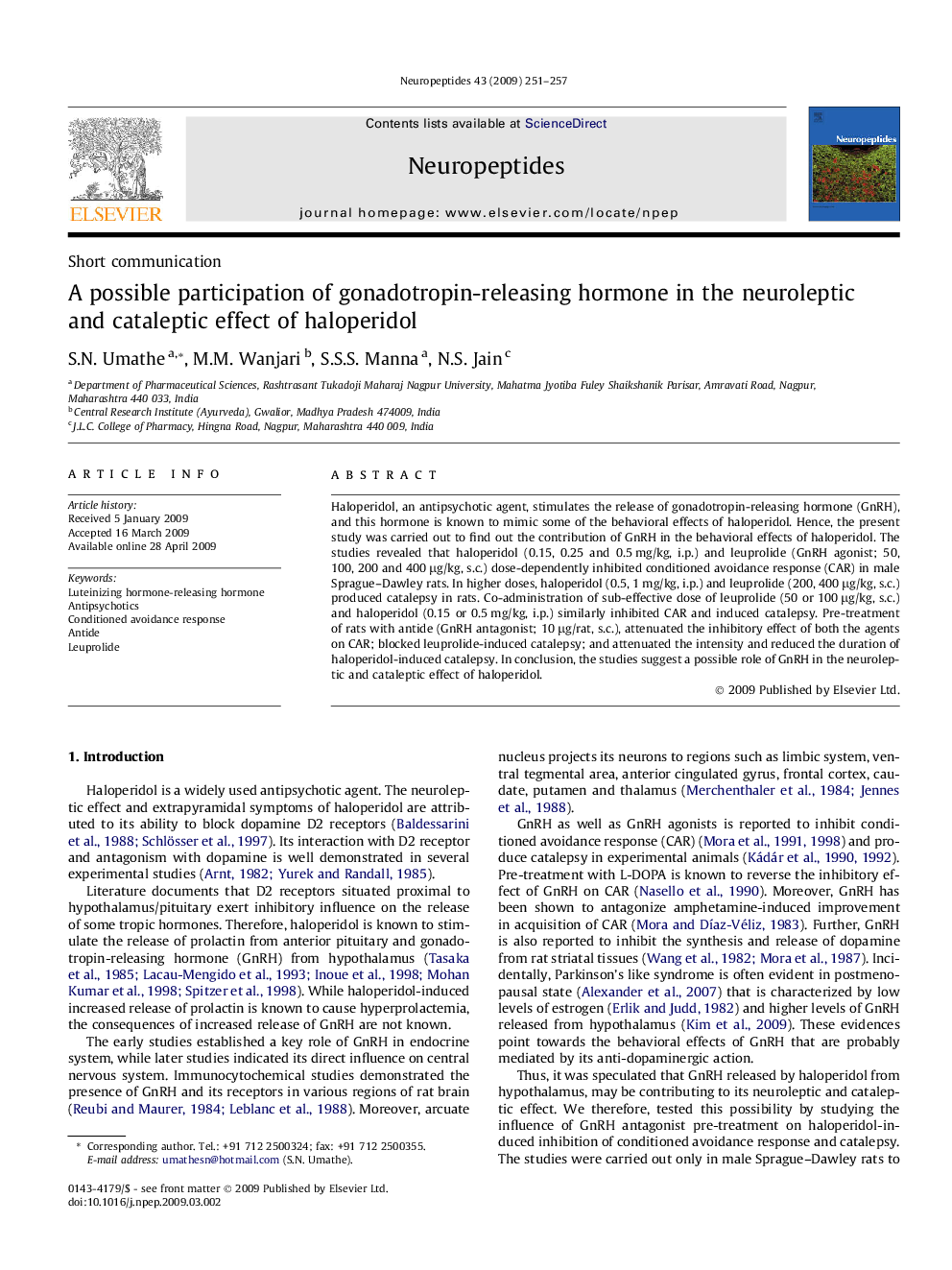| Article ID | Journal | Published Year | Pages | File Type |
|---|---|---|---|---|
| 2808548 | Neuropeptides | 2009 | 7 Pages |
Haloperidol, an antipsychotic agent, stimulates the release of gonadotropin-releasing hormone (GnRH), and this hormone is known to mimic some of the behavioral effects of haloperidol. Hence, the present study was carried out to find out the contribution of GnRH in the behavioral effects of haloperidol. The studies revealed that haloperidol (0.15, 0.25 and 0.5 mg/kg, i.p.) and leuprolide (GnRH agonist; 50, 100, 200 and 400 μg/kg, s.c.) dose-dependently inhibited conditioned avoidance response (CAR) in male Sprague–Dawley rats. In higher doses, haloperidol (0.5, 1 mg/kg, i.p.) and leuprolide (200, 400 μg/kg, s.c.) produced catalepsy in rats. Co-administration of sub-effective dose of leuprolide (50 or 100 μg/kg, s.c.) and haloperidol (0.15 or 0.5 mg/kg, i.p.) similarly inhibited CAR and induced catalepsy. Pre-treatment of rats with antide (GnRH antagonist; 10 μg/rat, s.c.), attenuated the inhibitory effect of both the agents on CAR; blocked leuprolide-induced catalepsy; and attenuated the intensity and reduced the duration of haloperidol-induced catalepsy. In conclusion, the studies suggest a possible role of GnRH in the neuroleptic and cataleptic effect of haloperidol.
